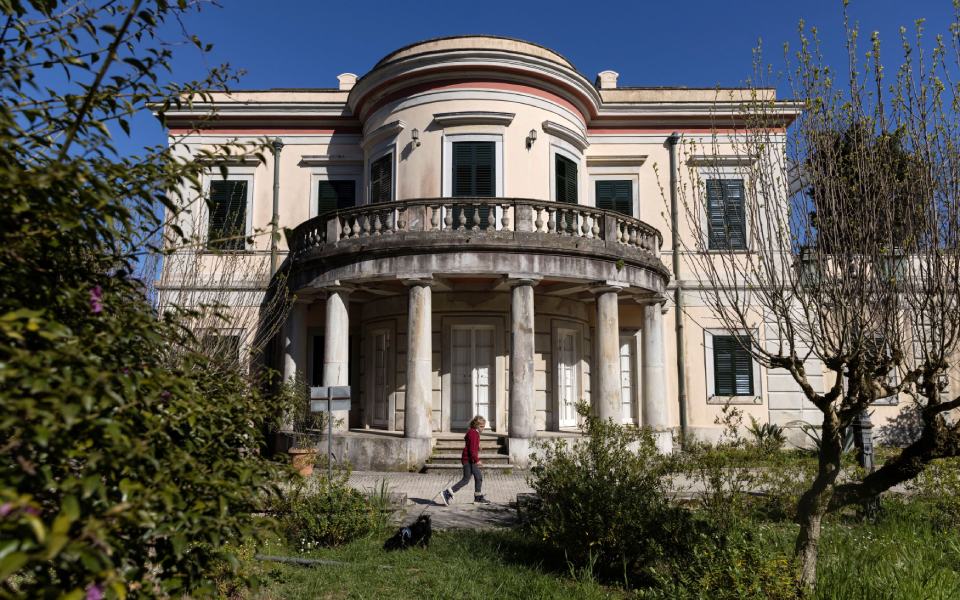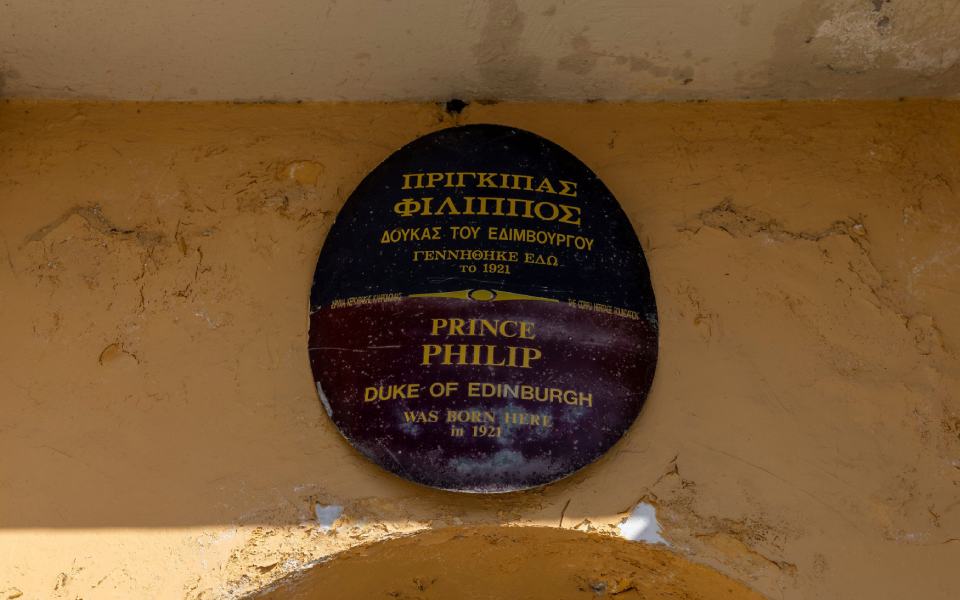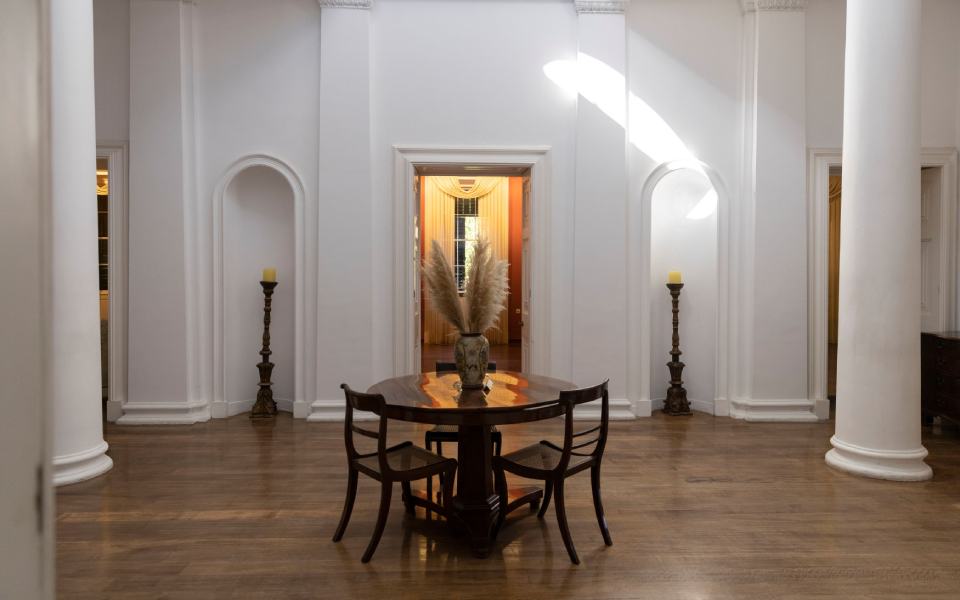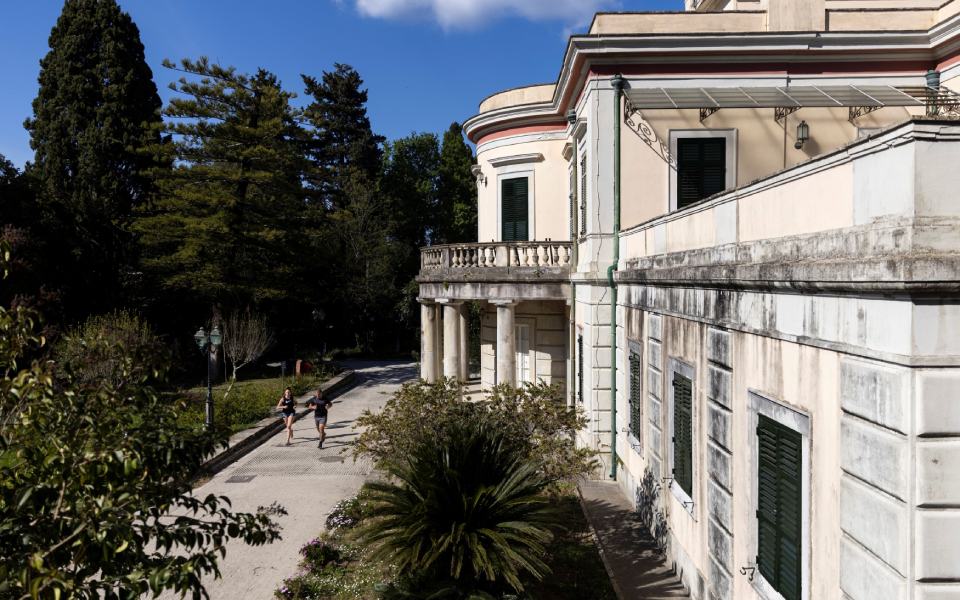The Armata Festival and the Allure of Spetses...
Experience Spetses in its most enchanting...

Former royal villa Mon Repos on the island of Corfu.
© REUTERS/Alkis Konstantinidis
Two kilometers south of the center of Corfu Town, at the start of the Kanoni Peninsula and near to where the local airport stretches down towards the shores of the Ionian Sea, stands the villa Mon Repos. Nestled in the forest of Paleopolis, the villa was first built as a summer residence for the British governors of the Ionian islands, and subsequently given to the Greek royal family. Today the grounds are a public park and both the villa and the land belong to the state.
The neoclassic villa was constructed in 1828 according to the plans of the architect Sir George Whitmore, the same man who designed the Palace of St Michael and St George in Spianada Square in Corfu Town, and an engineer named Harper. The British Lord High Commissioner of the United States of the Ionian Islands, Frederick Adam, and his second wife, Diamantina Palatino, a native of Corfu, were the first residents of the luxurious building, residing there between 1828 and 1831, when Adam was transferred to serve in India. During that time, the Ionian islands were under British rule.

A plaque commemorating the villa as the birthplace of the late Prince Philip, Duke of Edinburgh, on June 10, 1921.
© REUTERS/Alkis Konstantinidis

Interior
© REUTERS/Alkis Konstantinidis
In 1833, the villa housed a school of fine arts and, a year later, the grounds were opened to the public. The villa’s first royal resident was Empress Elizabeth of the Austro-Hungarian Empire, who stayed there in 1863. She so loved her stay on the island that she later built her own residence, the Achilleion Palace, close to the village of Gastouri, some five kilometers south of the villa.
In 1864, when the Ionian Islands were unified with the Greek State, the building was gifted to King George I of Greece, who named the villa “Mon Repos,” which means “My Rest” in French.
Over the years, the villa hosted a great number of state officials, prime ministers, presidents and members of royal families. Several royal births took place at the villa, including that of the late Prince Philip, Duke of Edinburgh, on June 10, 1921. Not all guests were royalty, however; the villa’s guest wing is informally known as “Tito,” a tribute to Yugoslavia’s long-time leader Josip Broz Tito, a frequent visitor.

Following the declaration of the Hellenic Republic in 1974, the property and its surrounding parkland reverted to public ownership. It is now home to the Archaeological Museum of Paleopoli.
© REUTERS/Alkis Konstantinidis
During the German occupation in World War II, the palace was used as the summer residence of the Italian commander of the Ionian Islands, Pierro Parini. After the Allied victory, the Greek royal family continued to use the building as their summer palace until 1967, when King Constantine II was forced to exile, after an unsuccessful attempt was made to overthrow the Greek Junta.
After the end of the dictatorship and the abolition of the monarchy in 1974, the villa was deeded over to the municipal authorities of Corfu. The former king of Greece, Constantine II, claimed it as part of his personal fortune. The dispute led to a case that went to the European Court of Human Rights. In 1991, the court ordered the Greek state to pay the exiled king compensation amounting to less than 1 percent of the villa’s worth.
Today, the villa is home to the Archaeological Museum of Paleopoli. On the 26-hectare estate, visitors can also see the remains of the once-renowned ancient town of Paleopolis, along with the remains of the Church of Aghia Kerkyra, built atop the foundations of a Roman amphitheatre.
The park remains open to visitors. Its lush garden, home to over 2,000 species of plants, flowers and trees, offers locals and tourists alike a blissful haven.
Experience Spetses in its most enchanting...
This spring, five majestic peaks across...
A weekend on the Saronic Gulf’s...
Shady hiking trails, a vibrant cultural...